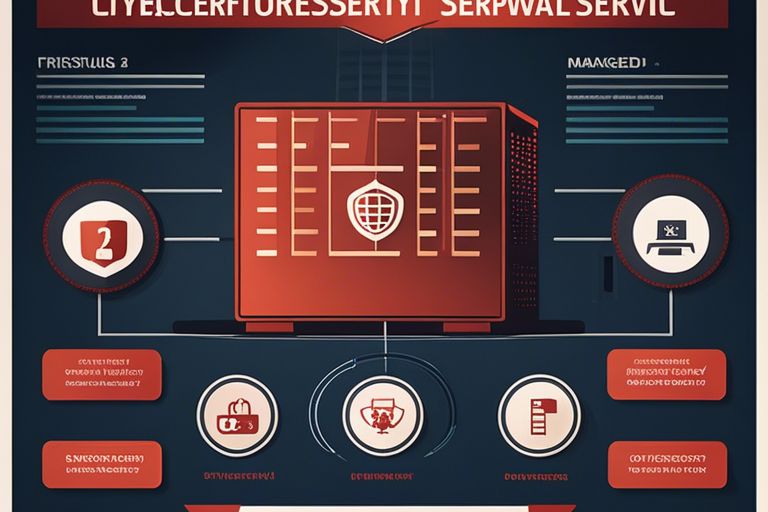What Is Endpoint Protection And Why It’s Critical For Cyber Security
You need to understand that endpoint protection is a vital component of your cyber security strategy. This technology...


Little What is MSP in Cyber Security – BleachCyber
One of the key components in cybersecurity, a Managed Service Provider (MSP) is a company that remotely manages a client’s IT infrastructure and/or end-user systems, typically on a proactive basis. MSPs offer a range of services, including cybersecurity, network monitoring, data backup, and disaster recovery.
What started as a basic IT support service has now evolved into a crucial player in the cybersecurity landscape. MSPs have adapted to the growing threats in the cyber world and are now equipped to provide advanced security solutions to protect their clients’ data and systems. Role MSPs play a critical role in helping businesses of all sizes navigate the complex and ever-changing cybersecurity landscape.
Your first step in assessing your cyber resilience posture is identifying potential vulnerabilities in your online assets. These vulnerabilities could include outdated software, weak passwords, lack of encryption, or unsecured network configurations. Conducting a comprehensive audit of your systems and networks will help you pinpoint areas that need immediate attention.
Your next step is to leverage tools and techniques for risk assessment to evaluate the severity of identified vulnerabilities and prioritize mitigation efforts. Utilize vulnerability scanners, penetration testing, security information, and event management systems to get a holistic view of your security posture. These tools can help you identify critical vulnerabilities that cybercriminals could exploit to gain unauthorized access to your systems.
Assessment: Implementing a robust risk assessment process is crucial to strengthening your cyber resilience. By regularly evaluating your systems and networks for vulnerabilities, you can proactively address security gaps before they are exploited. Investing in cutting-edge tools and techniques for risk assessment will enable you to stay ahead of cyber threats and safeguard your online assets.
With cyber threats evolving and becoming more sophisticated, it is crucial to strengthen your defenses with best practices. Implementing multi-layered security measures such as firewalls, antivirus software, and regular security audits can significantly reduce the risk of cyber attacks. Training your employees on cybersecurity awareness and best practices is also necessary in creating a secure online environment for your business.
Resilience is key when it comes to cybersecurity. Proactive monitoring and incident response planning are necessary components of a robust cybersecurity strategy. By continuously monitoring your network for suspicious activities and having a well-defined incident response plan in place, you can quickly identify and mitigate potential security threats before they escalate into major breaches.
Response: In the event of a security incident, a timely and effective response is crucial. This includes isolating the affected systems, containing the threat, investigating the root cause, and implementing remediation measures to prevent future incidents. By acting swiftly and decisively, you can minimize the impact of a cyber attack on your business and maintain cyber resilience.

For What Is Cyber Resilience? (And Why Is It Important?) – Airiam
With cyber threats evolving rapidly, it is crucial for MSPs to stay ahead of the curve by predicting and preparing for emerging threats. By continuously monitoring the cybersecurity landscape, MSPs can proactively identify potential risks and vulnerabilities, allowing them to implement robust security measures to safeguard their clients’ online assets.
On the forefront of cybersecurity, MSPs are integrating advanced technologies to enhance security measures and stay one step ahead of cyber threats. By leveraging technologies such as Artificial Intelligence, Machine Learning, and Advanced Analytics, MSPs can bolster their defenses and provide a more resilient security posture for their clientele.
Threats are constantly evolving and becoming more sophisticated, posing significant risks to organizations’ digital assets. It is vital for MSPs to continuously update their security strategies and leverage advanced technologies to combat these threats effectively.
A: MSP Cyber Resilience refers to the ability of Managed Service Providers (MSPs) to protect and defend their clients’ online assets from cyber threats, ensuring the security and integrity of their digital infrastructure.
A: Ensuring the security of online assets is crucial to protect sensitive data, maintain operational continuity, and safeguard the reputation of businesses. Cyber attacks can result in financial losses, data breaches, and damage to brand credibility, making proactive security measures crucial.
A: MSPs can enhance cyber resilience for their clients by implementing robust security measures such as regular vulnerability assessments, patch management, intrusion detection systems, security awareness training, and incident response plans. By staying proactive and vigilant, MSPs can help mitigate cyber risks and ensure the safety of their clients’ online assets.
You need to understand that endpoint protection is a vital component of your cyber security strategy. This technology...
You rely on robust cybersecurity measures to protect your business from evolving threats, and Endpoint Detection and...